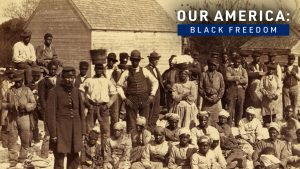
On June 19, 1865, Major General Gordon Granger of the United States Calvary rode into Galveston, Texas and found that Blacks were still enslaved. This was six months and 19 days since Lincoln’s Emancipation Proclamation. Upon learning of the situation. General Granger issued General Order No. 3 in accordance with President Lincoln’s Executive Order, the Emancipation Proclamation, which was issued on September 22, 1862, and took effect on January 1, 1863. The Proclamation freed those enslaved in the 11 States in rebellion against the Union and officially allows Blacks to fight in the Civil War. General Granger’s General Order No. 3 reads:
The people of Texas are informed that in accordance with a proclamation from the Executive of the United States all slaves are FREE. This involves an absolute equality of rights and rights of property between former masters and slaves and the connection heretofore existing between them becomes that between employer and free laborer. The freedmen are advised to remain at their present homes and work for wages. They are informed that they will not be supported in idleness, either there or elsewhere.
When the enslaved in Galveston, Texas were freed, slavery still existed in 2 of the 4 slave states that had not rebelled against the Union, Kentuckey and Delaware. At the start of the Civil War on April 12, 1861, four slave States remained in the Union, Maryland, Missouri, Kentuckey, and Delaware. West Virginia entered the Union as a slave state on July 20, 1863. Slavery was not abolished in the United States until the ratification of the 13th Amendment to the United States Constitution by Georga on December 6, 1865.
Maryland abolished slavery with its third state constitution which went into effect on November 1, 1864. This step marked the end of more than 200 years of slavery in the state beginning in 1642 when thirteen African people were brought as slaves to St. Mary’s City. The institution of slavery was not officially recognized in Maryland until 1663 when Maryland passed a law that established the legality of lifelong servitude for slaves of African descent. With this law, the Maryland Assembly ruled that all enslaved people should be held in slavery for life, and that children of enslaved mothers should also be held in slavery for life. In this way the institution of slavery in Maryland was made self-perpetuating. The 1664 Act read as follows:
Be it enacted by the Right Honorable, the Lord Proprietary, by the advice and consent of the upper and Lower House of this present General Assembly, that all negroes or other slaves already within the Province, and all negroes and other slaves to be hereafter imported into the Province shall serve durante vita. And all children born of any negro or other slave shall be slaves as their fathers were for the term of their lives…
Maryland gained admission into the United States as a slave state in 1788. Because Maryland borders Virginia, the slave trade and the plantation-based system of slave labor spread to Maryland and developed there, so that by 1860 there were 87,189 African American slaves in Maryland. Slavery continued in Maryland until November 1, 1864, when the state adopted its new state constitution, which outlawed slavery – one year and 11 months after the Emancipation Proclamation took effect and only 7 months before Granger’s Proclamation on June 19, 1865- Juneteenth.
Additional Resources:
A Guide to the History of Slavery in Maryland, Maryland State Archives, Annapolis Maryland, Revised 2020.
Maryland State Archives, Chapter 3 – Blacks before the Law in Colonial Maryland
The Washington Post, “The not-quite-Free State: Maryland dragged its feet on emancipation during the Civil War”, by Miranda S. Spivack, September 13, 2013.